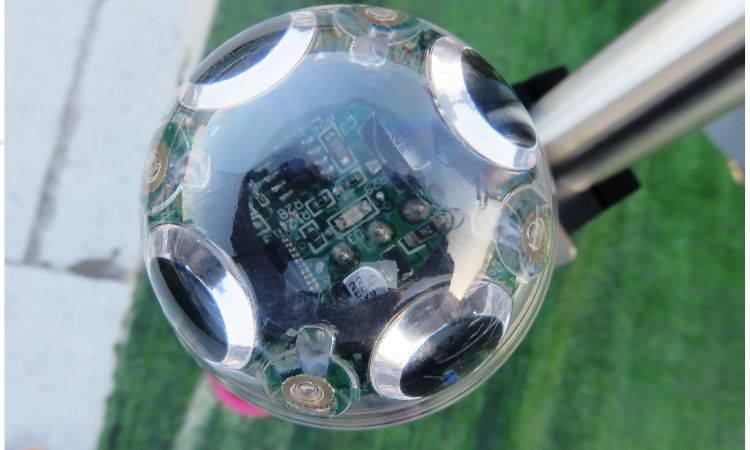The Sensor Market: Key Trends Reshaping Industries Worldwide
- ankit Vijayran
- Aug 21
- 4 min read

The world is becoming more connected, automated, and data-driven, and at the heart of this transformation lies the sensor market. From smartphones to smart cities, sensors are quietly shaping how we interact with technology. They detect, measure, and respond to changes in the environment—making our devices smarter and industries more efficient.
As global demand for automation, IoT (Internet of Things), and advanced electronics grows, the sensor market has evolved into one of the most dynamic sectors in technology. In this blog, we’ll break down what’s driving this growth, how different industries are adopting sensors, and what the future looks like for this booming market.
Expert Market Research Insight
According to Expert Market Research, the sensor market trends is poised for steady expansion in the coming years, supported by technological innovation and rising global adoption. The increasing demand for IoT-enabled devices, combined with growing applications across automotive, healthcare, and consumer electronics, ensures strong growth momentum. Companies that invest in R&D, sustainability, and AI-driven sensor solutions are likely to lead the next phase of the market’s evolution.
Understanding the Sensor Market
The sensor market refers to the industry focused on developing, manufacturing, and deploying sensors across various applications. Sensors are devices that convert physical parameters—such as temperature, pressure, motion, light, and sound—into signals that can be measured and analyzed.
These devices are no longer limited to industrial settings. They’re now embedded in everyday gadgets like fitness trackers, home assistants, and even automobiles. As technology becomes more personalized and predictive, the role of sensors is only growing stronger.
Key Drivers Fueling Sensor Market Growth
Several factors are pushing the global sensor market to new heights.
Rise of IoT and Smart Devices
The Internet of Things (IoT) has revolutionized the way devices communicate. Sensors are the foundation of IoT, collecting real-time data that enables automation in homes, healthcare, manufacturing, and transportation. With billions of connected devices worldwide, demand for sensors has skyrocketed.
Expanding Automotive Industry
Modern vehicles are equipped with dozens of sensors that improve safety, efficiency, and user experience. From proximity sensors in parking systems to advanced LiDAR in autonomous cars, the automotive sector is one of the largest consumers of sensor technology.
Growing Healthcare Applications
Wearable health monitors, diagnostic devices, and hospital equipment rely on precise sensors. The global health-tech boom has accelerated adoption, especially after the pandemic, as people seek continuous and remote health monitoring.
Industrial Automation and Smart Manufacturing
The shift toward Industry 4.0 has made sensors essential in robotics, predictive maintenance, and supply chain optimization. Factories equipped with smart sensors can operate more safely and efficiently while reducing costs.
Types of Sensors Shaping the Market
Not all sensors are the same. Different industries require different types of sensors, and each plays a unique role in capturing and analyzing data.
Temperature Sensors
Widely used in electronics, HVAC systems, and healthcare, temperature sensors ensure optimal conditions and safety.
Pressure Sensors
Critical in automotive and aerospace industries, these sensors monitor systems like braking, fuel, and hydraulics.
Motion and Proximity Sensors
From smartphone screens that adjust brightness to advanced security systems, these sensors enhance user interaction and safety.
Image and Optical Sensors
Found in cameras, biometric systems, and AR/VR devices, optical sensors are vital in consumer electronics and emerging technologies.
Environmental Sensors
These detect air quality, humidity, and gas levels, playing a crucial role in environmental monitoring and smart city projects.
Regional Insights into the Sensor Market
The sensor market is global, but regional dynamics influence demand and growth rates.
North America
Driven by innovations in healthcare technology, autonomous vehicles, and smart home solutions, North America is a leading hub for sensor adoption.
Europe
The European market benefits from strict regulations around environmental monitoring and automotive safety, which encourages sensor integration.
Asia-Pacific
Countries like China, Japan, and South Korea dominate manufacturing and consumer electronics. Their demand for cost-effective and high-performance sensors fuels the region’s rapid growth.
Middle East & Africa
Smart city initiatives, infrastructure development, and energy projects are creating opportunities for sensor deployment in this region.
Future Opportunities in the Sensor Market
The future of the sensor market is tied to innovation and integration. As artificial intelligence (AI) and machine learning become mainstream, sensors will evolve beyond data collection to enable predictive analytics.
We can expect to see greater miniaturization, energy efficiency, and cost reduction, making sensors accessible to even the smallest devices. Autonomous vehicles, healthcare wearables, and next-generation robotics will continue to be strong growth areas. Moreover, the rise of sustainable technologies will drive demand for environmental sensors that monitor pollution, energy consumption, and climate conditions.
FAQs About the Sensor Market
What is driving growth in the sensor market?
The main drivers include IoT adoption, demand for smart devices, healthcare advancements, and growth in autonomous vehicles.
Which industries use sensors the most?
The automotive, healthcare, consumer electronics, industrial, and environmental sectors are the largest adopters.
Which region has the fastest-growing sensor market?
Asia-Pacific leads in growth due to its dominance in manufacturing, electronics, and technology innovation.
What trends will shape the future of the sensor market?
Key trends include AI-powered sensors, miniaturization, energy-efficient designs, and the integration of sensors into smart infrastructure.












Comments